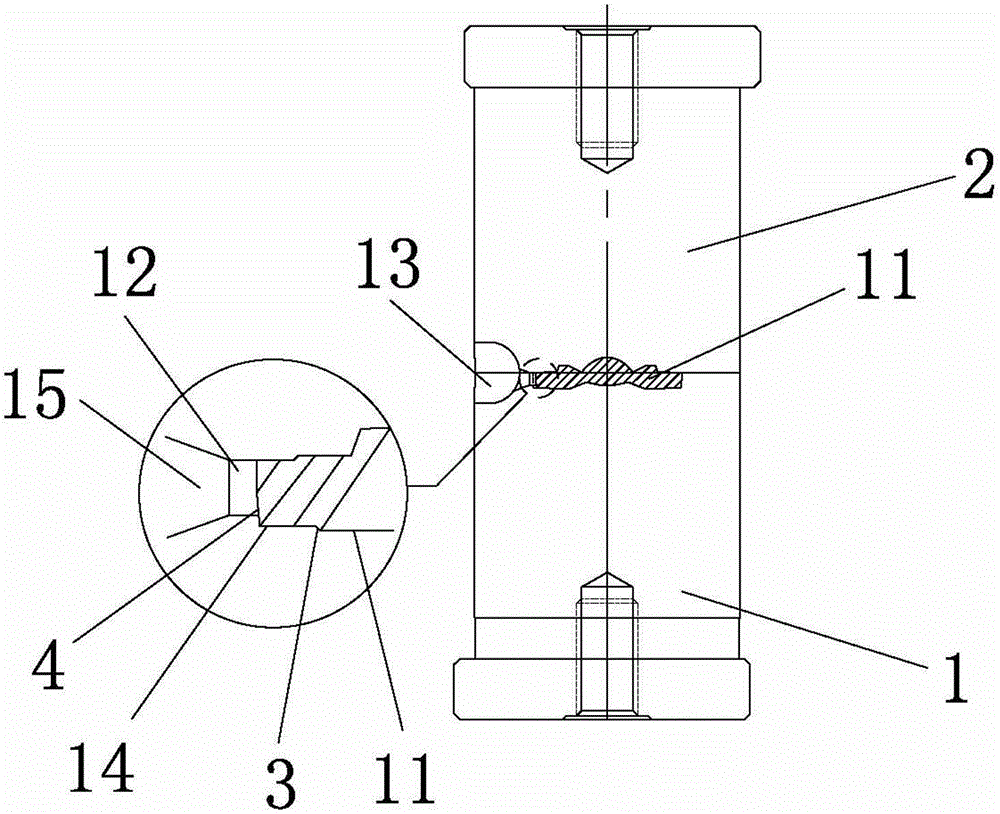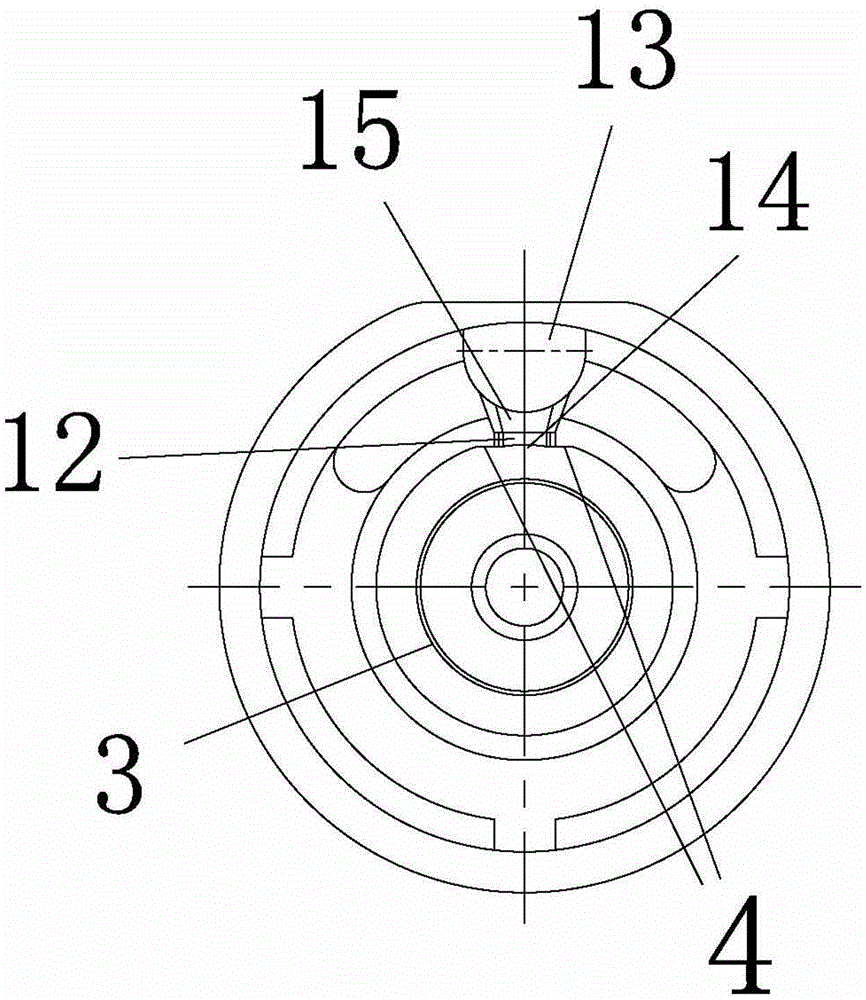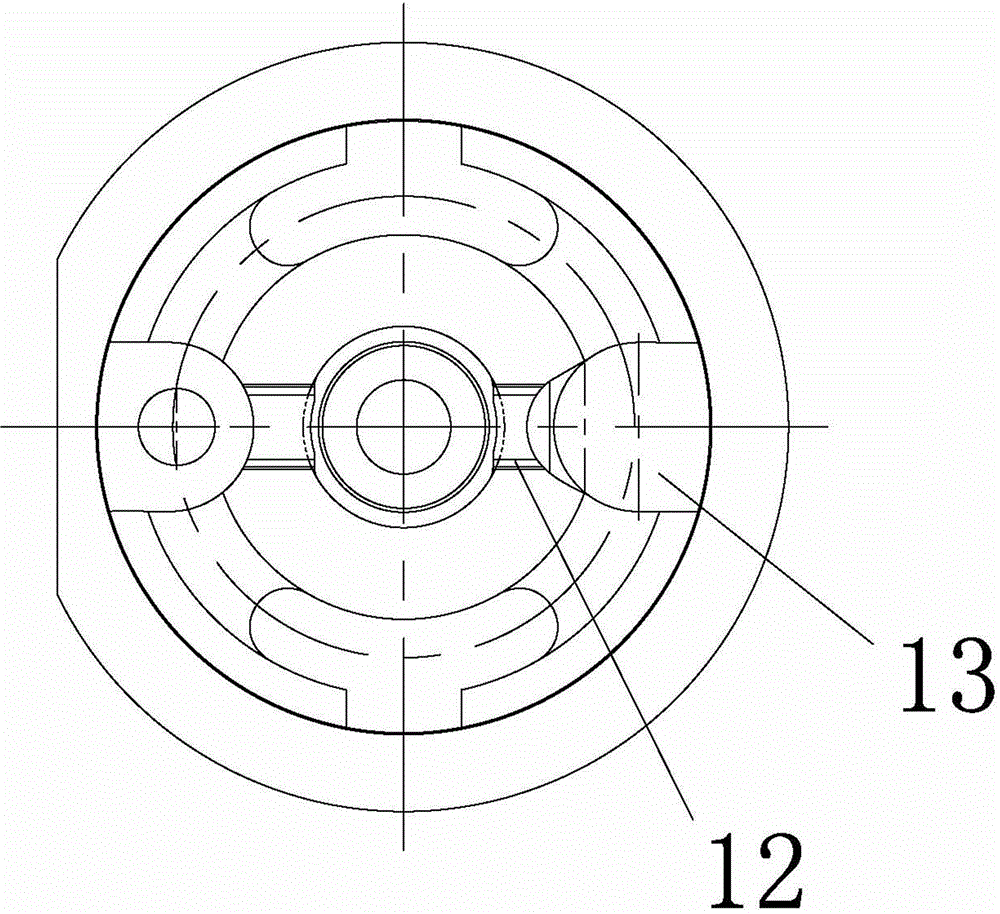Mould for optic lens
An optical lens and mold technology, applied in optical components, household appliances, other household appliances, etc., can solve the problems of poor liquid flow, easy petrochemicalization of diamond knives, and increased defective rate, etc., to improve yield, improve deformation, The effect of force balance
- Summary
- Abstract
- Description
- Claims
- Application Information
AI Technical Summary
Problems solved by technology
Method used
Image
Examples
Embodiment Construction
[0017] The present invention will be further described below in conjunction with accompanying drawing:
[0018] Optical lens molds, including mold cores, such as figure 1 As shown, the mold core includes a lower mold 1 and an upper mold 2, the end surface of the lower mold 1 forms a top surface, the outer edge of the top surface is surrounded by an edge, and a concave mold cavity 11 is provided in the center of the top surface. The edge of the mold cavity 11 opens a runner 12 toward the edge, and the edge is provided with a gate 13 toward the runner 12, and the intersection edge of the mold cavity 11 and the runner 12 1. A cut-off area 14 is formed between the side walls of the cavity 11 near the two sides of the runner 12, and a connecting channel 15 is connected between the runner 12 and the gate 13; the bottom surface of the cut-off area 14 is connected to the The bottom surface of the mold cavity 11 forms a step 3 at the intersection, and at the step 3 , the level of the ...
PUM
 Login to View More
Login to View More Abstract
Description
Claims
Application Information
 Login to View More
Login to View More - R&D
- Intellectual Property
- Life Sciences
- Materials
- Tech Scout
- Unparalleled Data Quality
- Higher Quality Content
- 60% Fewer Hallucinations
Browse by: Latest US Patents, China's latest patents, Technical Efficacy Thesaurus, Application Domain, Technology Topic, Popular Technical Reports.
© 2025 PatSnap. All rights reserved.Legal|Privacy policy|Modern Slavery Act Transparency Statement|Sitemap|About US| Contact US: help@patsnap.com



